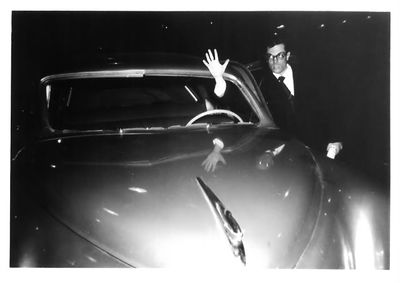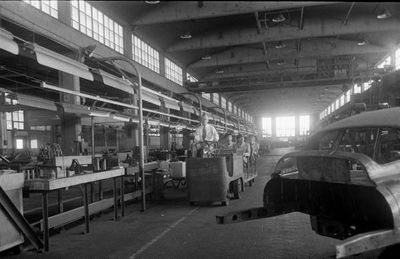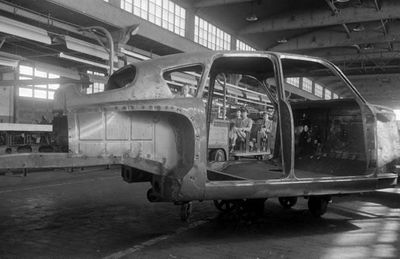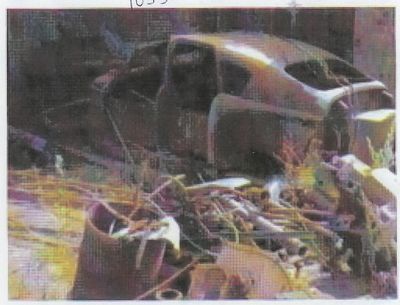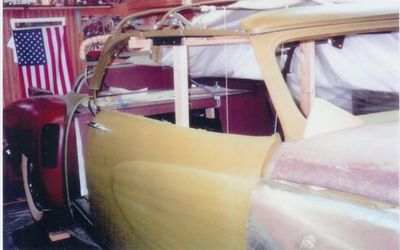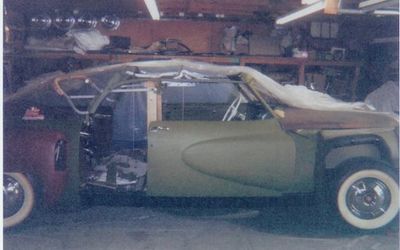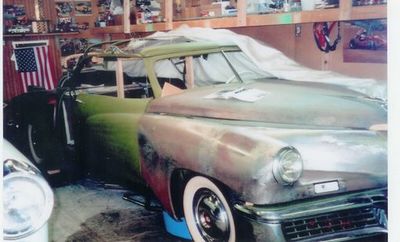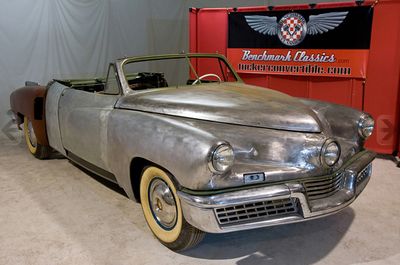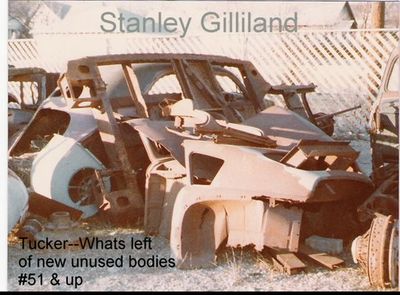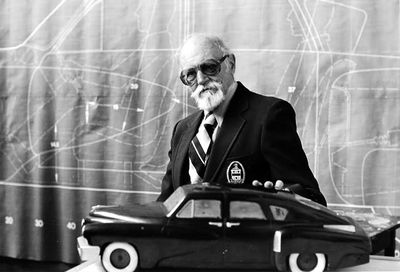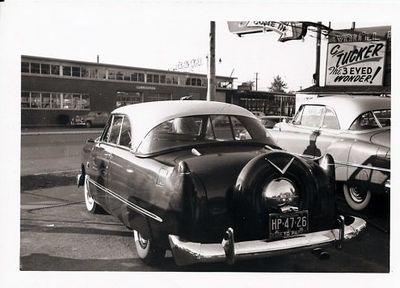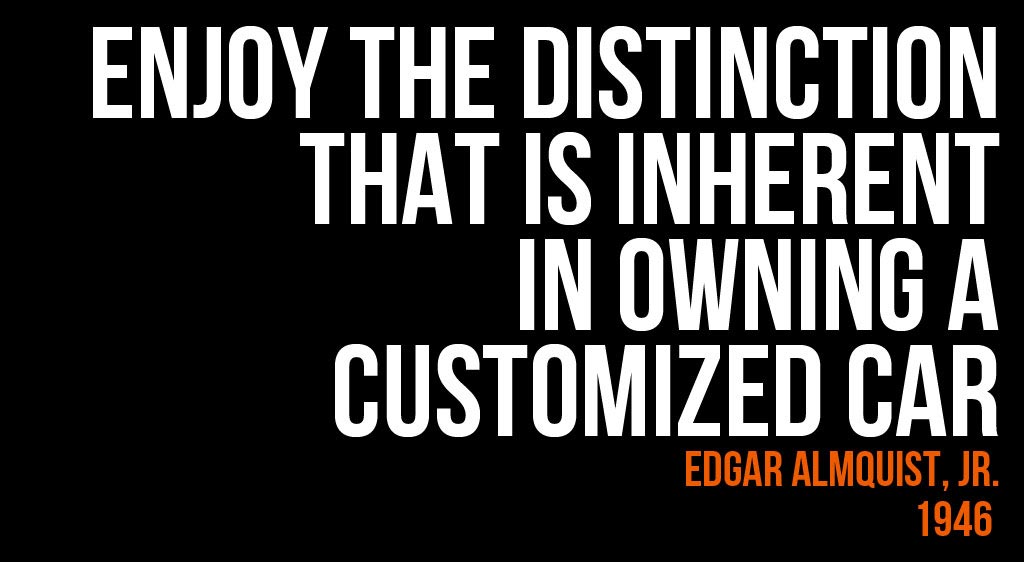Tucker 48

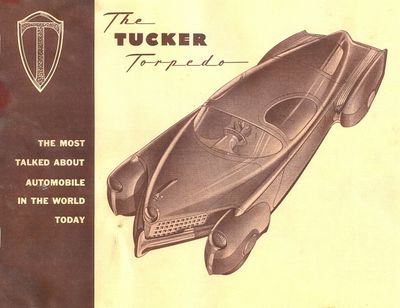



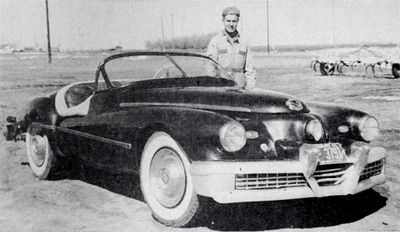
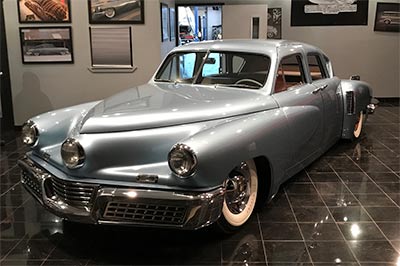
Contents
The Tucker Torpedo
What eventually became the Tucker 48 was originally promoted as the Tucker Torpedo. None Tucker Torpedo's were ever produced.
Design
Preston Tucker hired the legendary Alexander Sarantos Tremulis as the chief stylist of Tucker Corporation from 1947 to 1949. Alex Tremulis was given the task of completing the design of the Tucker 48 in just six days, because of promises made to investors to reach time lines. When major styling decisions regarding the Tucker had to be made, Preston Tucker deferred to Alex, invariably cautioning him that they had a boss bigger then all of them, and that's the automobile. Alex could do what he had to do, but he had to be sure that it was right for the car.
The results not only aesthetically speak for themselves, but were pretty aerodynamic, too. In fact, the Tucker 48 had a drag coefficient of just 0.27 (they rounded it up to 0.30 for print materials) and that made it the most aerodynamic car in the world. Just for comparison's sake, Tremulis's design was pen drawn under duress and the finished cars were hand formed with hammers. The Toyota Prius, designed on lots of computers and whose modus operandi is to generate as little wind resistance as possible, has a drag coefficient of 0.26.
The Tin Goose
The first full scale prototype Tucker Automobile was called the Tin Goose. The Tin Goose was built from a 1942 Oldsmobile. The Oldsmobile was used as an interior buck so that Alex Tremulis could establish the extremely critical door hinges required in order to allow the door opening to extend into the roof structure. Alex had intended to build the first Tin Goose out of clay, but the lack of clay available for this purpose after the war stopped him. He could also have built it out of wood, but he didn't have the pattern-shop facilities available at the time. The car was intended as a styling mock-up, and Alex decided to make it in metal because he had a group of superior metal craftsmen available.
During the trial of Tucker Corporation, Alex Tremulis was subpoenaed by the court as a witness in the trial. Robert Downing, the assistant prosecuting attorney, tried to persuade Alex to admit that the name Tin Goose implied that the Tucker was a hodgepodge because it was built from an old Oldsmobile. Alex insisted that the name Tin Goose was a nickname they used in the shop, and that it was a form of endearment, and that there was nothing in the use of the epithet to imply that the car was a pile of junk. In Automobile Quarterly Vol 4 No 1 Alex says that if he knew the name Tin Goose would be used as an instrument to pound nails into the coffin of the Tucker Corporation, he would have personally carved the car out of marble.
The Tin Goose was originally fitted with the 589 cid engine and fluid drive couplings. The car was later fitted with a 355 cid engine and a Cord transmission.
Safety
Preston Tucker was obsessed with building a safe car. To that end, he fitted a padded dashboard, decades before the rest of the industry was mandated to do after the publication of Unsafe at Any Speed. While the moving headlights (and fenders) never panned out, a third headlight was added — dubbed the "Cyclops Eye" — that moved with the steering wheel illuminating the road in the direction the car would be traveling. Today, 60 years on, moving headlights are only now becoming the norm, and only on upscale makes. All of the controls, including the radio, were grouped around the steering wheel ensuring that in the event of an accident protruding bits wouldn't impale passengers.
The vehicle also had a perimeter frame that surrounded the passenger compartment. As the engine was out back, there was a large carpeted box ahead of the front seats that passengers could dive into when an accident was imminent. Tucker also wanted to fit seatbelts to the 48 but his staff convinced him that doing so would give off the impression that the car was unsafe. When a test driver crashed and rolled one at 100 mph during a public demonstration at the Indianapolis Motor Speedway, then walked away with only bruises, the public was sold. And then became angry at the press and the government for essentially slandering the 48.
Engine
The Tucker Automobile had its engine mounted in the rear. The designers at Tucker Corporation regarded the drive shaft of contemporary cars as a relic of marine engineering, referring to it as a propeller shaft robbing a car for valuable interior space and forcing passengers to ride on top of a vibrating drive shaft that had to be tranquilized by a myriad of universal joints.
Preston Tucker's original vision called for a rear mounted 589 cubic inch (9.7-liter) Hemi flat-6 that was to be fuel injected and have overhead valves operated by hydraulic pressure as opposed to cams. How far ahead of its time was that? Well, fuel-injection didn't show up in a passenger car until 8-years later in the form of a Bosch mechanical unit in the 1955 Mercedes Benz 300 SL. The 589 was so massive that it required a 24-volt electrical system to get it to crank. However, the monster engine turned out to be a little too innovative, and they couldn't make it work. After that, Preston tried to fit a Lycoming aircraft engine into the engine compartment. The engine didn't fit, so Preston had to settle with an air-cooled helicopter engine. After his engineers converted the 335 cu. in. Franklin flat-6 to water-cooled, it pumped out a pretty healthy for the day 166 hp (Tucker had promised 150 hp from his 589 cu. in. beast) and an insane (for 1947) 372 ft-lb of torque. Just to make sure that no one else got a crack at the engine, Tucker bought Franklin (which was later sold to Poland in 1975). Despite its size and potency, the 48 weighed 4,235 pounds, essentially the same as contemporary cars from Lincoln, for instance. Both the engine and transmission were mounted in a subframe held in place by just 6 bolts. The idea was that while the engine was in the shop, a new powertrain could be swapped in so the customer could go about his/her business.
Transmission
Originally the Tucker 48 was planned to have a very innovative automatic transmission called the "Tuckermatic". The Tuckermatic should only have 27 parts, 90 less than typical slushboxes. There was no way a transmission like that could handle the mountain of torque served up by the Franklin motor. Ironically, the Tuckermatic box did as much to sink the company as anything else. The engineers never bothered to put a reverse gear in the prototype. Tucker always claimed that he was being spied on, and when word of this leaked out, the motoring press had a field day making fun of the car that couldn't go backwards.
After the plant closed Eddie Offutt and other emplouees continued to work putting the vehicles together till they ran out of parts. The Tin Goose through 1012 had Cord Transmissions. 1013 was the first Tucker to have the Y1 transmmission. 1026 and 1042 had R1 "Tuckermatics". 1048 had the Borg Warner 3-speed manual, and all other cars had either Y1 or Cord transmissions. The Tucker Automobile Club of America has also found out that Tucker Corporation did a great deal of research into the Borg Warner transmission and also the 0-360 Jacobs Liquid Cooled Engine.
Production
The Tucker 48 was designed in Michigan, and built in Chicago in a vast factory that is now the site of the "Ford City Mall" on Cicero Avenue. In addition to the Tin Goose, 50 Tuckers were produced at the Tucker factory. The first 25 assembled cars had a 128 inches long wheelbase. On Tucker 1026, and the last 25 produced cars, they extended the wheelbase by 2 inches, bringing the rear wheels back two inches to improve weight distribution and handling. The suspension in front was also changed on the last 25 cars. The gas tank on these were also moved from the mid-rear to the front. Ventilated wheel covers were replaced by smooth ones, and the rod that steered the center light was replaced with a cable.
By November 2nd, 1948 cars through Serial Number 1035 were complete and cars 1036 through 1042 were being held in Engineering for Transmissions. After the plant closed Eddie Offutt and other emplouees continued to work putting the vehicles together till they ran out of parts. The Tin Goose through 1012 had Cord Transmissions. 1013 was the first Tucker to have the Y1 transmmission. 1026 and 1042 had R1 "Tuckermatics". 1048 had the Borg Warner 3-speed manual, and all other cars had either Y1 or Cord transmissions.
According to the records after the auction, there were 58 Tucker bodies completed when the plant closed. 47 of the original 50 Tucker 48`s exists today.
Tucker 1027
Tucker number 1027 rolled at Indy.
Tucker 1051
Tucker 1051 was not completed at the Tucker factory, so it is not technically considered one of the original 51 cars. Tucker 48 Body No. 54 was purchased at the Tucker auction by the Poll Museum in Zeeland, Michigan in an incomplete state. Poll also purchased the engine #33584 that had been in Tucker Serial Number 1027 when it rolled during testing at Indy. For many years they attempted to build it into a Tucker. After a while they gave up and sold it to a person in New Jersey who completed it with a fiber-glass front clip in the late 80s.
Experimental Tuckers
Tucker 48 Body No. 57
According to the records there were 58 Tucker bodies completed when the plant closed. Body No. 57 was being worked on by Alex Tremulis in the styling department. When LIFE magazine gave the public access to its photo archive in 2008, there were found some pictures of a Tucker featuring a wrap around back glass and some modifications to the front fenders. This car is believed to be Body No. 57 that Alex Tremulis was working on when the factory closed. No one have never heard Alex talk about a Tucker with a wrap around back glass, so this can't be confirmed.
Convertible
Rumors have circulated for years about a Tucker convertible being worked on in the styling department of the Tucker factory. According to Alex Tremulis, no such car was ever built. Pictures of a Tucker convertible that is claimed to be body No. 57 that Alex worked on has been circulating the web for some time now. Some claim it is the real deal, while others trace the car back to the Tucker auction, were a former employee bought a body shell that he attempted to turn the car into a convertible. According to Tucker historians, that body was body no. 55. In February 2009 the Tucker Convertible was listed for sale on E-bay by Benchmark Classics with 1 000 000 USD as starting price. The car had a buy it now price of 5 000 000 USD. The car was prseneted as "Project Vera", a project that was being worked on in the experimental department when the plant closed down. According to the listing, a former Tucker designer was once interviewed about Project Vera years after the plant closed. One of the questions that he was asked was "Was there a Tucker convertible project ever started at the Tucker plant?" He responded "Yes, but I thought that the project had been scrapped when the plant closed."
Lost Tuckers
Tucker 1018
Tucker 1018 was wrecked in 1948. It slid sideways into a three while traveling at high speed near the intersection of Olean Rd. and Blakely in East Aurora, New York in August 1948. A wrecker tore the car in half removing it from the three. The remains of the car was returned to Bradford, Pennsylvania.
The remnants of the frame are located in Grand Rapids, Michigan and some body panels are in Roscoe, Illinois.
Tucker 1023
Tucker number 23 was destroyed in a fire in the late 70s while it was in storage at a mattress factory that burned to the ground. Remains of car after fire were buried under the garage of a TACA founder.
It is also believed that Tucker 1023 was the Tucker that raced at Canfield Speedway at the 1951 Memorial Day race. The car was driven by Joe Merola, and finished last with no laps completed. The reason Merola’s car didn’t finish a lap was because the car broke a right rear axel.
Replicas
Four replicas were made for the Francis Ford Coppola movie Tucker: a Man and his Dream. The four replicars were built by Mike Fennel Enterprises of Los Angeles, Clifornia. Three of the Movie Car replicas were built in fiberglass, and based on Ford LTD Chassis. One fiberglass car was painted green, and can be seen in the movie as it races around the race track. This Tucker is now located in Norway where it is in Sondre Kvipt's possession. The car is currenlty being rebuilt by Sondre Kvipt and Kjetil Kvipt. Another fiberglass car was made to look like Sondre's Tucker after the rollover. The fourth replica was a rebuilt Studebaker that was used in the flip over scene in the movie.
George Esch built a fiberglass Tucker Convertible replica. George completed the build in 1997. The car was based on a 1966 Corvair. George calls his car the "Glass Goose".
Jack Kiely's Tucker 48
Tucker 48 fiberglass replica owned by Jack Kiely. The car was built by Rob Ida and his crew at IDA Automotive. The build was completed in October of 2017. October 25, 2017 a Pre-SEMA unveiling of the car was held at IDA Automotive.[1]
Sources
www.tuckerclub.org
Tucker # 1057
www.tuckerclub.org - Owners and Service Manual
Automobile Quarterly Vol 4 No 1
www.jalopnik.com
Tucker 1035
Museu do Automóvel de Caçapava ANTIGAMENTE
www.vnews.com
www.tuckerconvertible.com
Did you enjoy this article?
Kustomrama is an encyclopedia dedicated to preserve, share and protect traditional hot rod and custom car history from all over the world.
- Help us keep history alive. For as little as 2.99 USD a month you can become a monthly supporter. Click here to learn more.
- Subscribe to our free newsletter and receive regular updates and stories from Kustomrama.
- Do you know someone who would enjoy this article? Click here to forward it.
Can you help us make this article better?
Please get in touch with us at mail@kustomrama.com if you have additional information or photos to share about Tucker 48.
This article was made possible by:
SunTec Auto Glass - Auto Glass Services on Vintage and Classic Cars
Finding a replacement windshield, back or side glass can be a difficult task when restoring your vintage or custom classic car. It doesn't have to be though now with auto glass specialist companies like www.suntecautoglass.com. They can source OEM or OEM-equivalent glass for older makes/models; which will ensure a proper fit every time. Check them out for more details!
Do you want to see your company here? Click here for more info about how you can advertise your business on Kustomrama.






